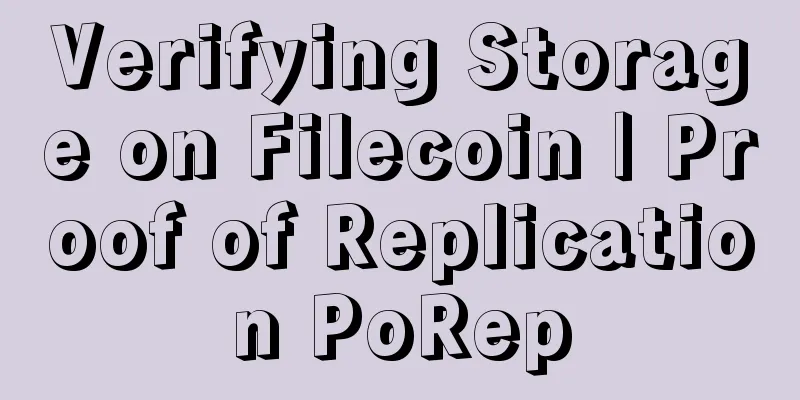Verifying Storage on Filecoin | Proof of Replication PoRep

In the previous article, we discussed in detail the preparation and transmission of data, mainly introducing two aspects: preparing data for storage, negotiating storage transactions and transmitting data. This article will discuss the question "When to run proof of replication?"In Proof of Replication , storage miners prove that they are storing a physically unique copy or replicas of the data. Proof of Replication happens only once, when the miner first stores the data. When storage miners receive each piece of customer data, they put it into a sector. Sector is the basic unit of storage in Filecoin and can contain fragments from multiple transactions and customers. When a sector is filled, a CommD (data commit, also known as UnsealedSectorCID) is generated, representing the root node of all CIDs in the sector. Next, a process called sealing occurs. During sealing, the sector data (identified by CommD) is encoded through a series of graphing and hashing to create a unique copy. The root hash of the Merkle tree of the resulting copy is CommRLast. (Learn more about merkle trees in our Decentralized Data Structures tutorial.) CommRLast is then hashed together with CommC (another merkle root output from the Proof of Replication). This generates CommR (Commitment of Replication, also known as SealedSectorCID), which is recorded to the public blockchain. CommRLast is kept privately by miners for future use in Proof of Spacetime, but is not saved to the chain. The encoding process is designed to be slow and computationally heavy, so it is difficult to cheat. (Note that encoding is not the same as encryption. If you want to store private data, you must encrypt it before adding it to the Filecoin network.) CommR provides the proof we need that a miner is storing a physically unique copy of a customer’s data. If you store the same data with multiple storage miners, or make multiple storage deals for the same data with one miner, each deal will have a different CommR. The sealing process also compresses the proof of replication using zk-SNARKs to keep the chain small so that all members of the Filecoin network can store the chain for verification. We will learn more about zk-SNARKs in future courses. ——End—— |
>>: Will IPFS storage be stopped by the government? Content risks may be borne by miners
Recommend
Is it good to have a mole at the corner of the mouth? What is the relationship between the mole at the corner of the mouth and destiny?
Moles on the face will have a certain influence o...
Is it good for a girl to have a mole on her back? It depends on the location
For a person, the back is a blind spot, so many p...
Reading the Artist's Eyes
Reading the Artist's Eyes The eyes are the wi...
What does a mole on the back of a man's neck mean?
We all know that moles in different positions wil...
The type of palms of people who have been poor all their lives and have very rough palms
In fact, for a person, palmistry can easily revea...
Coin Zone Trends: Bitcoin Price Trends Based on Big Data This Week (2016-12-26)
The price of the currency rebounded strongly and ...
What does a red mole on the face mean?
Everyone knows that every feature of our face may...
Does your face attract noble people?
Does your face attract noble people? If you have ...
What is the fortune of people with shallow fate lines?
When science was not well developed in ancient ti...
Observe the recent fortune of individuals through face reading
Facial features also have an impact on the mind. ...
From 48,000 to 56,000, why did the price of Bitcoin fluctuate so much in just two weeks?
From 48,000 to 56,000, why did the price of Bitco...
Do people with small noses have good fortune?
Many people who read faces pay great attention to...
Is it true that boys with girlish appearance cannot read?
In this society, people who study well are often ...
What are the palm lines of a spendthrift woman?
Jack Ma retired a few days ago, and some netizens ...
In-depth mining: Bitcoin price rises 13 times in one year. Is this a shortcut to getting rich?
On January 3, 2009, Bitcoin founder Satoshi Nakam...









